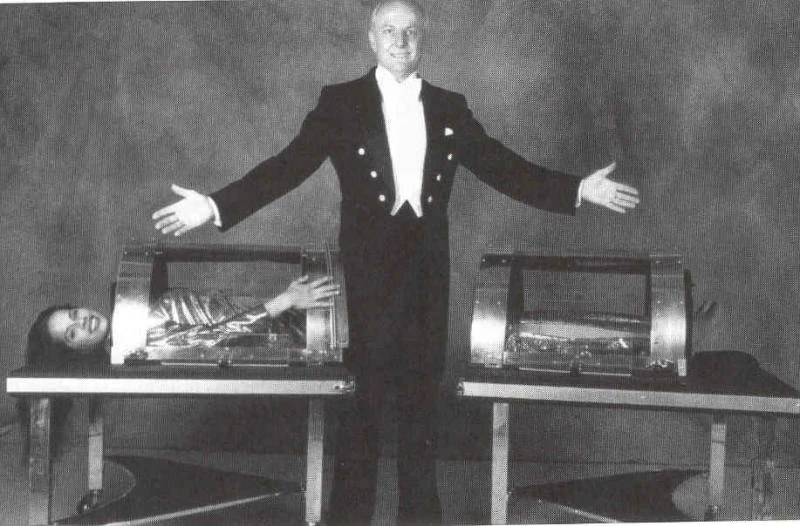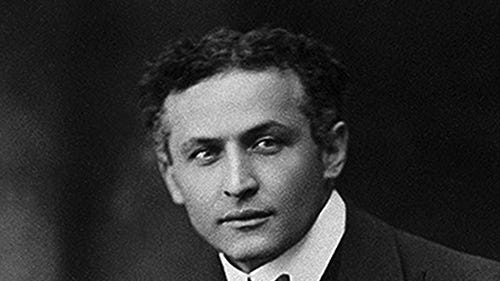P.T. Selbit, born Percy Thomas Tibbles in 1881 in Hampstead, London, is celebrated as the pioneering magician who first performed the iconic sawing a woman in half illusion in 1921. This groundbreaking act at the Finsbury Park Empire Theatre revolutionized stage magic, introducing a thrilling, shocking spectacle that captivated audiences worldwide. Beyond this famous trick, Selbit’s inventive genius and entrepreneurial spirit shaped modern magic. This article explores his age, net worth, career, and lasting legacy, offering fresh insights into his life and contributions.
Early Life and Rise to Fame
Born in 1881, P.T. Selbit developed a passion for magic during his youth while apprenticed to a silversmith. The basement of the shop was leased to magician Charles Morritt, whose innovative tricks inspired the young Tibbles. By his early 20s, Selbit adopted his stage name—created by spelling “Tibbles” backward and dropping a “B”—and began performing as a professional illusionist. His height and weight are not well-documented, but his charismatic stage presence made him a standout performer.
Selbit’s early career included a pseudo-Egyptian act under the name Joad Heteb from 1902 to 1908, capitalizing on the era’s fascination with exotic performances. This period also saw him editing The Wizard magazine and publishing The Magician’s Handbook in 1901, establishing his reputation as a thought leader in magic.
The Iconic Sawing a Woman in Half Illusion
In December 1920, Selbit previewed his sawing a woman in half illusion to promoters, securing a public performance on January 17, 1921, at London’s Finsbury Park Empire Theatre. The act featured assistant Jan Glenrose (later Betty Barker in public shows) entering a coffin-sized box, bound by ropes at her wrists, ankles, and neck. Selbit sawed through the box, creating the illusion of cutting her in half, only to reveal her unharmed. This trick, described as a “puzzle effect” by Selbit, shocked audiences and set a new standard for theatrical magic.
The timing of the illusion was perfect, as post-World War I audiences craved bold, innovative entertainment. Selbit’s marketing tactics, like spilling fake blood outside theaters, heightened the drama, ensuring packed houses. However, his U.S. tour faced challenges when rival magician Horace Goldin patented similar illusions, forcing Selbit to rebrand his act as “The Divided Woman.”
P.T. Selbit’s Net Worth and Career Earnings
Estimating Selbit’s net worth is challenging due to limited financial records, but his success as a touring magician and inventor suggests a comfortable income for his time. In the 1920s, top magicians earned significant salaries through theater bookings and merchandise. Selbit’s innovative illusions, like Walking Through a Wall (1914) and Through the Eye of a Needle (1924), commanded high fees. His entrepreneurial ventures, including magic publications, likely supplemented his earnings, though exact figures remain speculative.
Personal Life: Was P.T. Selbit Married?
Little is known about Selbit’s personal life, including whether he was married or dating. Historical records focus on his professional achievements, leaving his relationships private. This mystery adds to his enigmatic persona, as he dedicated much of his life to perfecting his craft. Unlike modern celebrities, Selbit’s era lacked the media scrutiny that might reveal details about his romantic life.
Other Notable Illusions and Innovations
Selbit’s creativity extended beyond sawing. His Walking Through a Wall (1914) used a trapdoor mechanism, while The Mighty Cheese (1912) featured a gyroscope to defy audience attempts to tip it over. Later illusions like Girl/Man Without a Middle (1924) and The Million Dollar Mystery showcased his knack for spectacle. These creations highlight his ability to blend engineering with showmanship, influencing magicians like David Copperfield and Criss Angel today.
P.T. Selbit Biography Table
| Aspect | Details |
|---|---|
| Full Name | Percy Thomas Tibbles |
| Stage Name | P.T. Selbit |
| Birth Year | 1881, Hampstead, London |
| Death Year | 1938 |
| Age at Death | Approximately 57 |
| Nationality | British |
| Famous Illusion | Sawing a Woman in Half (1921) |
| Other Illusions | Walking Through a Wall, The Mighty Cheese, Through the Eye of a Needle |
| Career Start | Early 1900s |
| Notable Works | The Magician’s Handbook (1901), The Wizard magazine editor (1905–1910) |
| Stage Persona | Joad Heteb (pseudo-Egyptian act, 1902–1908) |
| Key Performance Venue | Finsbury Park Empire Theatre, London |
| First Assistant | Jan Glenrose (1920), Betty Barker (1921) |
| Net Worth (Estimated) | Unknown, but significant for a top magician of his era |
| Marital Status | Unknown |
The Cultural Impact of Selbit’s Work
Selbit’s sawing illusion reshaped magic by introducing the archetype of the female assistant in peril, a trope still prevalent in modern performances. Academic Naomi Paxton, a magician and suffragist researcher, argues that the illusion wasn’t rooted in misogyny but reflected the era’s fascination with dramatic narratives. She notes, “The assistant’s role is active, not passive, requiring skill to sell the illusion.” This perspective highlights the collaborative nature of the act, with assistants like Jan Glenrose playing pivotal roles.
The trick’s enduring popularity is evident in modern variations, from David Blaine’s street magic to elaborate Las Vegas shows. A 2021 New York Times article celebrated the illusion’s 100th anniversary, noting its adaptability across cultures and mediums, including a viral video of magician Justin Flom performing it on his daughter with books instead of a saw.
Challenges and Legal Battles
Selbit’s U.S. tour faced setbacks when Horace Goldin claimed to have invented a similar sawing illusion, securing patents that restricted Selbit’s branding. Despite legal battles, Selbit’s original performance remains the first documented public execution of the trick. This rivalry underscores the competitive nature of early 20th-century magic, where innovation was fiercely protected.
Selbit’s Legacy and Modern Relevance
By his death in 1938 at age 57, Selbit had left an indelible mark on magic. His illusions inspired generations, and his entrepreneurial approach—combining performance, publishing, and invention—set a blueprint for modern magicians. Today, platforms like YouTube (youtube.com) and Wikipedia (en.wikipedia.org/wiki/P._T._Selbit) keep his legacy alive, while social media handles like @MagicCircleUK on X celebrate his contributions.
Selbit’s work also resonates in pop culture. For example, a 2024 post on X by @TheMagicHistorian praised Selbit’s “simple yet profound” approach, noting how his illusions relied on minimal props but maximum impact. This reflects a broader trend where magicians prioritize narrative over complex machinery, a technique Selbit pioneered.
Conclusion: A Visionary Ahead of His Time
P.T. Selbit was more than a magician; he was a visionary who transformed stage magic with his sawing a woman in half illusion. His ability to blend innovation, timing, and showmanship made him a legend. While details about his net worth, height, weight, or marital status remain elusive, his professional achievements speak volumes. Explore more about Selbit’s life at Magicians Magazine or Wikipedia, and follow @MagicCircleUK on X for updates on magic history.











